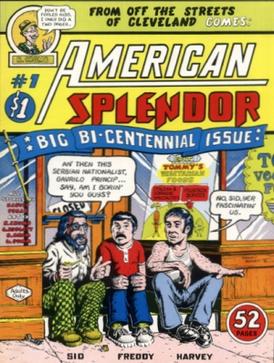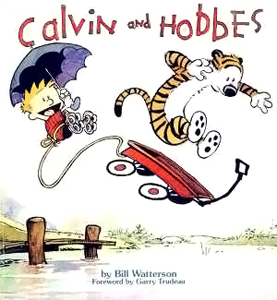 Indie Comics: Which Way to Go?
Indie Comics: Which Way to Go?I think are two major directions you can take with regards to comics, particularly indie comics. And by indie comics, I mean non-superhero comics, not published by Marvel or DC or even Dark Horse. Think 8.5x11" paper folded in half, stapled. The first direction is "real life" or something like it. Personal stories, characters based on real life people (exaggerated, of course), but overall a commitment to depicting the boring, awkward, painful day-to-day realities of life. Being dumped by a significant other, awkward sexual misadventures, painful life experiences, and death (social and literal) all make for the typical indie comic. They can even have an important cultural-historical bent to them as well: think Satrapi's Persepolis, a personal account of coming of age during the Iranian revolution. Sure, exciting, wonderful, happy things in life happen, too, but you don't get mad or sad or frustrated (read: contemplative) about the great things in your life. When you're happy, the endorphins kick in and you don't really think of stewing on what just happened. When you think of the first direction, you can't help but think of people like Harvey Pekar. His American Splendor is one of the most recognizable examples of the classic indie comic, in part because the art of R. Crumb. If you have a chance to watch the movie, American Splendor (see the link), you get to see the truly bizarre overlapping of Paul Giamatti playing Harvey Pekar. It is part documentary, part dramatic re-enactment.
If I had to choose a more modern, up-to-date form of the autobiographical, indie comic form, I would pick Adrian Tomine's Optic Nerve comic, collected in 32 Stories. I mention this particular work, because I want to do another post in which I examine Tomine's art in comparison to other kinds of comic art, and in 32 Stories you get to see Tomine's progression in his art skills, which is fascinating.
The second direction is "archetype and foil", which usually means there is an underlying concept that provides the means to write dialog and throw the characters into situations. Think Laurel and Hardy, Abbott and Costello, and more importantly Bill Watterson's Calvin and Hobbes. Calvin and Hobbes is not an indie comic, but I think it makes for a good transition into my own attempt at the archetype and foil comic genre. When you have a pre-existing character type, you can place that character in a situation in which he/she will have plenty to talk about. The foil character then is a sounding board for archetype. It's not as clear-cut as I am making it out. I am simplifying to make a point. Call it a "straight man" or a sidekick, but you need someone to set up the joke and another person to land it.

My attempt at the archetype and foil genre is The Devil and Mr. Gandhi. The Devil (or Satan, or a dozen other names) as a character has a pre-existing history and mythology. We all know what the Devil should look and sound like. He is the bad guy, the trickster character, the deceiver, the tempter. And he is probably pretty fun. Mohandas K. Gandhi, on the other hand, was a champion of non-violent protest, civil rights, and humanity in general. He wore glasses and home-spun cloth. He was highly educated. He was a nerd. So, of course, you put these two people together and things will happen.
The scene depicted below is actually loosely based on real-life events. I actually went to a movie theater where I asked for salt, and the greasy, shitball kid working there wanted to charge me $1.50 for salt. And not even real salt, some gross, disgusting, butter and salt-flavored salt alternative (it was orange). And I did imagine torturing the punk.




No comments:
Post a Comment
Note: Only a member of this blog may post a comment.